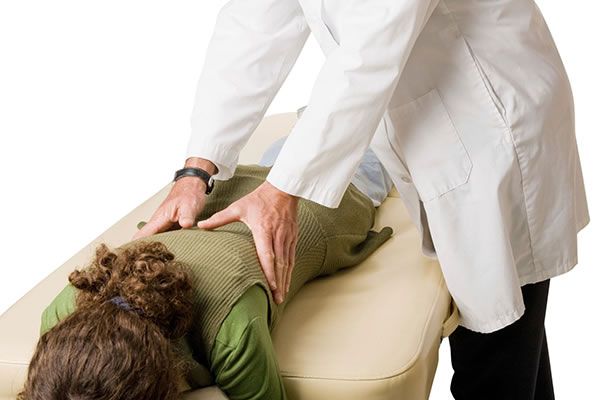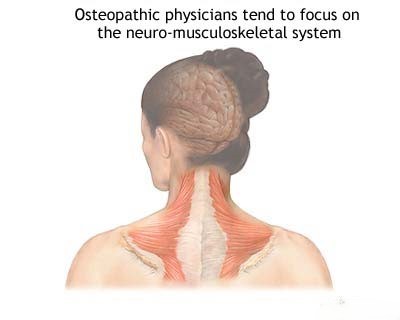Chiropractic, osteopathy
Introduction: Hands-On Therapies
Chiropractic, Osteopathy, and Manual Therapy represent distinct but overlapping healthcare approaches that utilize hands-on techniques to diagnose, treat, and prevent musculoskeletal and related disorders. They often focus on the relationship between the body's structure (primarily the spine, joints, and soft tissues) and its overall function (1, 2, 3).
While historically some approaches involved more forceful techniques, modern manual medicine increasingly incorporates a range of methods, including gentle "soft tissue" techniques alongside joint manipulation and mobilization, tailored to the individual patient's needs and condition (1, 4).
Defining Chiropractic, Osteopathy, and Manual Therapy
- Chiropractic: A healthcare profession primarily focused on diagnosing and treating mechanical disorders of the musculoskeletal system, especially the spine. Chiropractors often use spinal manipulation (adjustment) as their main treatment modality, aiming to restore joint mobility and improve nervous system function (1, 5).
- Osteopathy: A system of diagnosis and treatment that emphasizes the structural and functional integrity of the body. Osteopathic practitioners (DOs in the US, Osteopaths elsewhere) use a variety of manual techniques, including manipulation, mobilization, and soft tissue work, often with a holistic perspective considering the body as an integrated unit (2, 6). Some osteopathic approaches also include visceral and cranial techniques, though evidence for these varies.
- Manual Therapy: A broader term referring to specialized hands-on techniques used primarily by physical therapists, but also by osteopaths, chiropractors, and others. It includes joint mobilization, joint manipulation, and various soft tissue techniques applied to treat neuro-musculoskeletal pain and dysfunction (3, 4).
These therapies are often based on the principle that restoring normal movement and alignment in joints and soft tissues can alleviate pain, improve function, and support the body's natural healing processes.
Common Techniques Used
Practitioners employ a variety of hands-on methods:
Spinal Manipulation / Adjustment
This typically involves applying a controlled, high-velocity, low-amplitude (HVLA) thrust to a specific spinal joint or other joints (1, 5). The goal is often to restore joint motion, reduce pain, and influence nerve function. It is a primary technique in chiropractic and also used by some osteopaths and specially trained manual physical therapists.
Joint Mobilization
These are typically slower, passive movements applied to a joint within or at the limit of its range of motion, aiming to improve mobility, reduce pain, and increase joint nutrition (3, 4). Different grades of mobilization are used depending on the goal.
Soft Tissue Techniques
A wide variety of methods target muscles, fascia, ligaments, and tendons (3, 4, 6):
- Myofascial Release: Applying sustained pressure or stretch to fascia (connective tissue) to release restrictions.
- Muscle Energy Techniques (MET): Using voluntary muscle contractions by the patient against a controlled counterforce from the practitioner to improve joint mobility or lengthen muscles.
- Post-Isometric Relaxation (PIR): A specific MET variation involving a gentle isometric contraction followed by relaxation and passive stretching.
- Strain-Counterstrain (Positional Release): Moving the body part into a position of maximum ease to release muscle tension.
- Trigger Point Therapy: Applying pressure to hypersensitive points within muscles to alleviate local and referred pain.
- Therapeutic Massage: Various techniques (effleurage, petrissage, friction) applied to muscles and soft tissues to reduce tension, improve circulation, and relieve pain. Often used preparatorily before joint techniques.
Indications (Conditions Often Treated)
Manual therapy approaches are frequently utilized for managing (1, 3, 5, 6):
- Acute and Chronic Low Back Pain
- Neck Pain (cervicalgia), including pain related to degenerative changes or whiplash injury
- Certain types of Headaches (e.g., cervicogenic headache, tension-type headache)
- Radicular Pain (e.g., sciatica related to disc protrusion/herniation, often as part of multimodal care)
- Joint Pain and Stiffness (e.g., shoulder pain like adhesive capsulitis, hip/knee pain associated with osteoarthritis - for symptom relief and mobility)
- Myofascial Pain Syndromes (fibromyalgia-related pain, trigger points)
- Temporomandibular Disorders (TMJ dysfunction)
- Some Peripheral Nerve Entrapments (e.g., contributing factors related to soft tissue tightness, adjunctive to other treatments for carpal tunnel syndrome)
- Postural Dysfunctions (related muscle imbalances)
- Some forms of neuralgia or neuritis where mechanical factors or muscle tension contribute.
Note: Application for visceral conditions (ptosis, dyskinesia) is primarily within specific osteopathic frameworks and lacks widespread scientific validation (2).
Contraindications and Risks
While generally considered safe when performed by trained practitioners, manual therapies, especially spinal manipulation, have contraindications and potential risks (1, 7, 8).
Absolute Contraindications (Should NOT be performed in the area):
- Bone Fracture
- Spinal Instability (e.g., severe spondylolisthesis, post-traumatic)
- Malignancy (Cancer) in the area of treatment
- Active Infection (e.g., Osteomyelitis, discitis)
- Cauda Equina Syndrome or Progressive Neurological Deficit (requires urgent medical/surgical evaluation)
- Severe Osteoporosis (relative to forceful techniques)
- Certain Inflammatory Arthropathies during acute flare (e.g., Rheumatoid Arthritis, Ankylosing Spondylitis in unstable spine)
- Lack of patient consent
- Lack of diagnosis
Relative Contraindications / Precautions (Require careful consideration, modification, or avoidance):
- Anticoagulant Therapy or Bleeding Disorders
- Moderate Osteoporosis
- Atherosclerosis / Vascular Disease (especially significant for cervical manipulation - see below)
- Herniated Disc with radiculopathy (manipulation controversial, mobilization/soft tissue often used)
- Psychological factors (e.g., severe pain avoidance)
Vascular Risks with Cervical Manipulation:
A rare but serious risk associated specifically with cervical spine manipulation is injury to the vertebral or carotid arteries (dissection), which can lead to stroke (7, 8). Careful screening for risk factors and signs/symptoms of vascular pathology is crucial before performing cervical manipulation. Key red flags include (7):
- History of neck/vascular trauma, migraine-type headaches, hypertension, smoking, relevant cardiac/vascular disease, previous stroke/TIA, diabetes, clotting disorders.
- Acute onset of severe, unusual neck/head pain.
- Signs of Vertebrobasilar Insufficiency (VBI): The "5 D's And 3 N's" - Dizziness, Diplopia (double vision), Dysarthria (slurred speech), Dysphagia (difficulty swallowing), Drop attacks; Ataxia (unsteadiness); Nausea, Numbness (facial/perioral), Nystagmus (involuntary eye movements).
- Signs of Carotid Artery involvement: Transient visual loss (amaurosis fugax), neurological deficits (TIA/stroke symptoms), Horner's syndrome (ptosis, miosis, anhidrosis).
- Lower cranial nerve dysfunctions.
(The table from the original text provides detailed symptom comparison, summarized here as key red flags). Practitioners must perform thorough screening before considering cervical manipulation (7, 8).
Other Potential Risks:
- Common: Temporary soreness or aching after treatment.
- Less common: Rib fracture (especially in elderly/osteoporotic), worsening of disc herniation, transient neurological symptoms.
Choosing appropriate techniques and patient selection based on thorough assessment is vital for safety and effectiveness.
Scientific Perspective and Evidence
The evidence supporting manual therapies varies depending on the condition, the specific technique used, and the profession applying it (9, 10).
- Spinal Manipulation: There is moderate-quality evidence supporting its use for acute and subacute low back pain, and some evidence for certain types of neck pain and cervicogenic headache (9, 10). It's often recommended as one potential treatment option within clinical practice guidelines.
- Mobilization and Soft Tissue Techniques: Often used as part of a broader physiotherapy or rehabilitation program alongside exercise. Evidence supports their use for improving mobility and reducing pain in various musculoskeletal conditions, though often strongest when combined with active approaches (3, 4).
- Osteopathic Manipulative Treatment (OMT): Evidence reviews show potential benefits for low back pain, but evidence for other conditions, particularly those based on visceral or cranial concepts, is often limited or inconclusive (2, 6).
- Overall: Many guidelines recommend manual therapy techniques as part of a multimodal approach (including exercise and education) for common musculoskeletal pain conditions (9). More high-quality research is needed for many specific applications and techniques.
Differential Diagnosis
Pain presenting in areas commonly treated with manual therapy (e.g., back, neck, head) requires ruling out non-musculoskeletal or serious causes:
| Presenting Symptom | Potential Serious/Non-Musculoskeletal Causes |
|---|---|
| Low Back Pain | Cauda Equina Syndrome, Spinal Infection (Discitis/Osteomyelitis), Spinal Tumor (Primary/Metastatic), Vertebral Fracture (Osteoporotic/Traumatic), Inflammatory Spondyloarthropathy (e.g., Ankylosing Spondylitis), Abdominal Aortic Aneurysm, Kidney Stone/Infection, Pancreatitis, Pelvic Inflammatory Disease. |
| Neck Pain | Cervical Myelopathy, Spinal Infection/Tumor, Vertebral Fracture/Instability, Meningitis, Vascular Dissection (Vertebral/Carotid), Referred Cardiac Pain (Angina/MI), Inflammatory Arthritis Flare. |
| Headache | Subarachnoid Hemorrhage, Meningitis/Encephalitis, Brain Tumor, Giant Cell Arteritis, Stroke/TIA, Acute Glaucoma, Carbon Monoxide Poisoning, Intracranial Hypertension/Hypotension. |
| Shoulder Pain | Rotator Cuff Tear (Full thickness), Fracture, Septic Arthritis, Referred pain (Cardiac, Diaphragmatic, Gallbladder), Tumor, Inflammatory Arthritis flare. |
A thorough medical history and examination are essential to screen for these red flags before initiating manual therapy.
References
- World Health Organization (WHO). WHO guidelines on basic training and safety in chiropractic. Geneva: WHO; 2005. Available from: https://www.who.int/publications/i/item/9789241593717
- World Health Organization (WHO). Benchmarks for training in osteopathy. Geneva: WHO; 2010. Available from: https://www.who.int/publications/i/item/9789241599665
- International Federation of Orthopaedic Manipulative Physical Therapists (IFOMPT). Educational Standards in Orthopaedic Manipulative Therapy. 2016. (Defines manual therapy within PT context)
- Chaitow L, DeLany J. Clinical Application of Neuromuscular Techniques, Volume 1: The Upper Body. 2nd ed. Churchill Livingstone; 2008. (Covers soft tissue techniques like MET, PIR)
- National Center for Complementary and Integrative Health (NCCIH). Spinal Manipulation: What You Need To Know. Updated Dec 2019. Available from: https://www.nccih.nih.gov/health/spinal-manipulation-what-you-need-to-know
- Franke H, Franke JD, Fryer G. Osteopathic manipulative treatment for nonspecific low back pain: a systematic review and meta-analysis. BMC Musculoskelet Disord. 2014;15:286. doi:10.1186/1471-2474-15-286
- International Federation of Orthopaedic Manipulative Physical Therapists (IFOMPT). Cervical Arterial Dysfunction (CAD) International Framework. 2020. (Guidance on screening for vascular risks)
- Cassidy JD, Boyle E, Côté P, et al. Risk of vertebrobasilar stroke and chiropractic care: results of a population-based case-control and case-crossover study. Spine (Phila Pa 1976). 2008;33(4 Suppl):S176-S183. doi:10.1097/BRS.0b013e3181644600
- Rubinstein SM, de Zoete A, van Middelkoop M, Assendelft WJ, de Boer MR, van Tulder MW. Benefits and harms of spinal manipulative therapy for the treatment of chronic low back pain: systematic review and meta-analysis of randomised controlled trials. BMJ. 2019;364:l689. doi:10.1136/bmj.l689
- Gross A, Langevin P, Burnie SJ, et al. Manipulation and mobilisation for neck pain contrasted against an inactive control or another active treatment. Cochrane Database Syst Rev. 2015;(9):CD004249. doi:10.1002/14651858.CD004249.pub4





